Explainer
- Explainer
- Company tax
Do big miners pay their fair share?
Described as “the gift that keeps on giving”, Australia’s mineral wealth has made mine owners into multibillionaires. But at a time when we pay to import our own gas, are the spoils being shared fairly?
It’s 1851, and Bathurst is in the grip of gold fever. A prospector called Edward Hargreaves, recently arrived from California, reckons to have found an immense deposit nearby and the townsfolk have simply lost their collective minds. The local blacksmith does a roaring trade in picks and crow-bars as scores of would-be prospectors rush into the hills, “full of hope that a day or two’s labour would fill their pockets with the precious metal”, reported the local paper, sniffing, “Of course, this must all end in disappointment.”
Nearby creeks teem with scrabbling hordes armed with shovels, wash-basins, tin pots, colanders and “garden and agricultural implements of every variety”. Some even get lucky: prospector Edward Austin stumbles across a nugget worth £35 – about a year’s wages at that time. It’s the beginning of a gold rush spreading across the country, from Ballarat and Bendigo in Victoria, down to Tasmania, and across to Kalgoorlie in Western Australia.
Colonial governments, meanwhile, began to wrestle with how to best profit from these newly discovered riches. Their taxes were not always well-received: a licence fee levied on miners working near Ballarat resulted in Australia’s most renowned civil revolt, at the Eureka Stockade in 1854.
Today, iron ore, coal, gas and other extracted goodies attract a range of taxes and royalties that vary according to what’s being dug up or pumped out and where. It’s a complex arrangement, but some observers are nevertheless adamant the taxes should be higher, that resources belong to all Australians, and we should profit equally.
Resource companies, for their part, typically argue that they create jobs, bear risk and already contribute greatly to the economy while still pocketing profits that can turn individuals into billionaires. Recent attempts at tax reform have been mixed: the last major effort, in 2010, led to the downfall of a prime minister.
How are miners and petroleum companies taxed? Should resources be more heavily taxed? Why don’t we, with our mineral riches, now have a vast sovereign wealth fund like Norway’s?
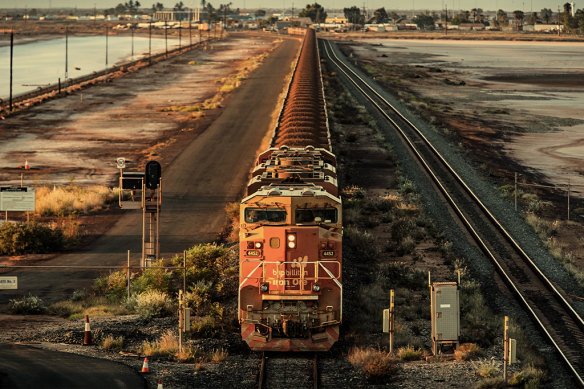
A BHP freight train carrying iron ore travels along a rail track towards Port Hedland, Australia in 2019Credit: GETTY, DIGITALLY TINTED
How are miners and petrochemical companies taxed?
Gold drew fortune seekers from around the world to Australia in the 1800s – quadrupling our population between 1851 and 1871. Yet, today, our mineral wealth mainly lies in exports of coal, liquefied natural gas (LNG), battery metals and – the big one – iron ore, which the Australian Strategic Policy Institute describes as “the gift that keeps on giving”. In 2023, it generated export income of around $124 billion.
The state of Western Australia, in particular, has benefited enormously from China’s demand – and a handful of individuals have become enormously rich in the process, too. Lang Hancock, the WA mining multimillionaire who wanted to use atomic weapons to create shipping harbours, was fond of recounting the tale of his first major discovery of iron ore in the 1950s.
Hancock, who had already made a small fortune from the Wittenoom asbestos mine, claimed that in 1952, he and his wife Hope were returning to Perth from the Pilbara in a small plane when swelling storm clouds forced them to fly low. As they swept along a gorge in the Hamersley Range, Hancock saw a cliff that looked like solid rusted iron. He then returned after the rainy season had ended, so his telling of the story goes, to lay claim to what was believed to be one of the largest deposits of iron ore in the world.
Some are sceptical that it happened quite as romantically as Hancock described, citing weather records from the time that seem to dispute the likelihood of stormy weather. It was likely iron ore had already been observed long before by government surveyors in the vicinity.
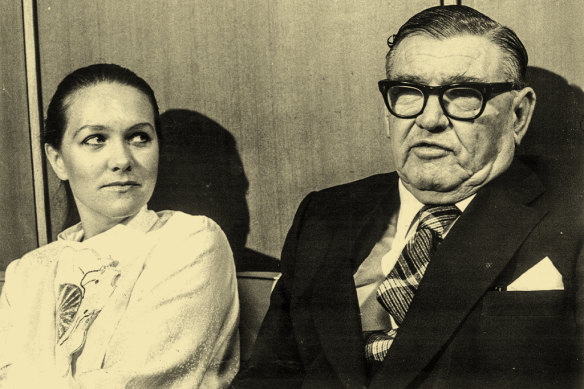
Gina and Lang Hancock at a press conference in Sydney in 1982.Credit: FAIRFAX MEDIA, DIGITALLY TINTED
Nonetheless, Hancock did stake out the claim and partnered with a multinational to actually do the digging. His masterstroke was negotiating the deal with British miner Rio Tinto, operating locally as Hamersley Iron, which guaranteed his company a percentage of the value of extracted ore in perpetuity, an income stream that would flow to his only child, Georgina (Gina), after his death in 1992. Gina, who married Frank Rinehart in 1982 to become Gina Rinehart, successfully expanded Hancock’s empire and today controls Roy Hill, one of Australia’s largest iron ore mines. Forbes estimates her wealth at $44 billion.
Like her father, Rinehart has long been a critic of governments. “Rinehart,” noted The New Yorker in a 2013 profile, “seems to lack any sense of just how dimly her fellow Australians might look upon a multibillionaire arguing that their standard of living should be lowered in pursuit of tax and labour policies that will obviously benefit her.”
Miners around Australia and petroleum companies around our coastline, of course, pay a variety of taxes as their products come out of the ground and are processed and sold. These include royalties, company tax, payroll tax, GST and other levies.
Unlike taxes, [state royalties] are paid irrespective of whether the companies doing the digging or drilling go on to make a profit from their haul.
First come royalties, a term that originated in the UK as a payment to the Crown for the right to mine gold and silver – which are generally payable to the state or territory where the resource is located, not the Commonwealth. They are typically charged at a percentage rate on the commodity according to the quantity or market value. Unlike taxes, they are paid irrespective of whether the companies doing the digging or drilling go on to make a profit from their haul. (Lang Hancock was not a fan, in 1969 calling royalties “a vicious sectional inflationary tax imposed upon the mining industry exclusively … without economic or moral justification”.)
Today, state royalties are levied in a multitude of ways according to what’s being extracted, where, and how much it is processed. NSW levies different royalties on underground coal to coal from open-cut mines. Western Australia levies a higher royalty by weight on bulk material, such as iron ore, than on refined metals such as gold. In 2022–23, resource royalties of $12.3 billion accounted for nearly 30 per cent of WA’s government revenue, contributing to a budget surplus of $4.2 billion and fuelling arguments elsewhere in Australia over how the states share general GST revenue.
Next come federal taxes, such as company tax, which are levied on profits made after expenses are deducted, including development costs. In addition to company tax, offshore petroleum projects are subject to a special tax called the Petroleum Resource Rent Tax, or PRRT, which Labor introduced in 1988 (more on this later). Aside from this, resource companies are subject to the same taxes as other large companies, chiefly company tax and taxes like payroll tax and fuel excise.
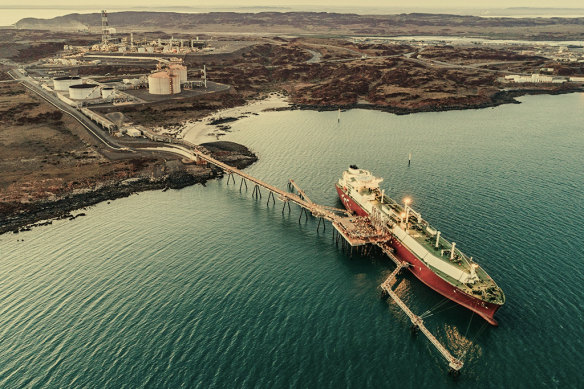
Woodside’s Pluto LNG plant in Western Australia.
Have we always taxed mineral resources?
Pretty much as long as there have been mines, the people in charge of things have taxed them – and miners have complained about it. The Romans ruled that all mines and mining rights belonged to the emperor, who could extract fees as he saw fit. In 4 AD, the state proclaimed that anyone who wanted to mine on private property could, on condition they paid 10 per cent of the takings to the landowner and 10 per cent to the treasury of Rome.
In Roman-era Britain, the empire claimed ownership of all gold and silver mines and demanded a proportion of the output of other mines, such as the tin mines in Cornwall and Devon. In the second century, when Rome occupied the Iberian Peninsula, silver mines in New Carthage (now the Spanish city of Cartagena) “employed” 40,000 men (most of them slaves) and generated around 35 tonnes of silver a year for the Roman state in taxes.
The Islamic caliphs who invaded the peninsula in the 8th century – the so-called Moors – taxed miners at 10 per cent, which helped to fund La Mezquita, the elaborate mosque-slash-cathedral dating from 784 AD, today a major tourist attraction.
“Muslim Berber invasions added another rich layer of mineral tradition,” Jeannette Graulau, associate professor in political science, tells us from New York’s Lehman College. “The Umayyads minted silver dirhams at Cordoba, an Islamic currency that found its way to other Mediterranean markets. Gold coins appeared in the tenth century, too, minted from local gold sources.”
Later, the Castilians, forebears of modern-day Spaniards, evolved a more complex system of taxes. Domestically, a series of laws enacted in 1387 called “ordenanzas” allowed anybody to exploit deposits of gold, silver, mercury – then known as “quicksilver” – anywhere in Castile, but they had to grant the Crown two-thirds of the take once expenses had been accounted for (a precedent, perhaps, for the modern-day end-of-financial-year “tax deduction”.)
After the discoveries of precious metals in the Americas, the Castilian rulers struck deals with explorers such as Vicente Yáñez Pinzón, who had sailed with Christopher Columbus to the New World in 1492, granting him the right to mine gold, silver and copper as long as he sent (a punishing) five-sixths of his discoveries back to the Crown.
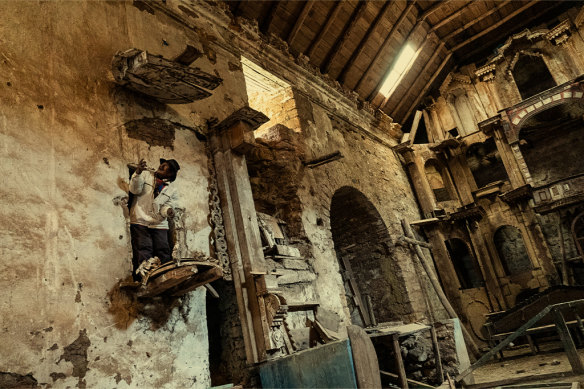
The abandoned Santa Barbara mercury mine in Peru, once one of the world’s largest.Credit: AP, DIGITALLY TINTED
Mercury, essential for refining silver, came from deposits of cinnabar ore, found mostly in Peru. There, unfortunate Indigenous men were pressed into service – no small undertaking. “To the merely normal hardships and dangers of gas, cave-ins, fire, pneumonia, over-work and underfeeding, was added the horror of mercurial poisoning,” wrote Oskar Spate in his 1979 treatise The Spanish Lake. Cinnabar, like refined mercury, was toxic, rotting gums and eventually causing sleeping sickness and death. (Mercury is one of the few metals that are not produced in great quantities in Australia.)
Bit by bit, as Graulau writes in her history of silver mining, taxation in the New World became more sophisticated to both guarantee the Crown its take and to encourage further development by daring conquistadors. “One must take for granted that cheating on taxes and smuggling took place,” she tells us. “However, given that taxes fed the military expansionist campaigns of the Castilian Crown, one must also take for granted that tax collection was somewhat effective. In exchange for taxes, producers enjoyed political advantages denied to other actors of medieval society.”
The Eureka rebellion had its origins in the 1851 introduction of a licence fee, or tax, that was charged at a flat rate on all miners irrespective of how much gold they actually managed to find.
Unsurprisingly, resource taxes have often been controversial. Goths who warred with the Romans from 376 AD were joined by disaffected Balkan miners “who could no longer endure the heavy burden of taxes”, observed the Ancient Roman writer Ammianus Marcellinus. In 1497, miners from Devon and Cornwall in south-west England marched on London to protest a new tax imposed by King Henry VII, unfortunately finding themselves completely outnumbered by government troops, who put them to the sword in the Battle of Deptford Bridge.
Closer to home, the Eureka rebellion had its origins in the 1851 introduction of a licence fee, or tax, that was charged at a flat rate on all miners (initially 30 shillings a month) irrespective of how much gold they actually managed to find. Discontent simmered for three years while miners protested, eventually leading to the battle of the Eureka Stockade, near Ballarat in Victoria, on December 3, 1854 between Peter Lalor’s rebel miners and colonial forces, leading to the death of 22 rebels.
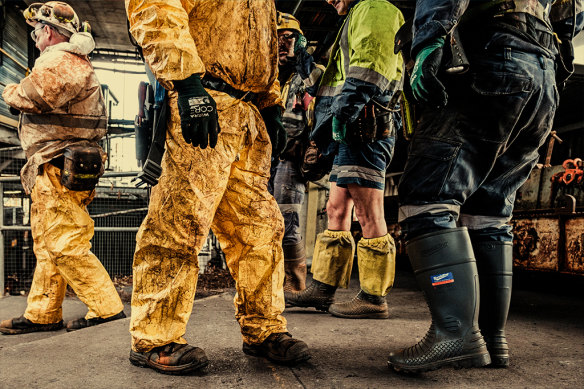
Coal miners in Bargo, NSW.Credit: AFR. DIGITALLY TINTED
Do resource companies pay enough tax today?
Miners like Gina Rinehart often argue they pay their fair share of taxes. And they do contribute substantially to public coffers: in 2021–22, according to the Australian Tax Office, BHP and Rio Tinto alone paid nearly a quarter of all corporate income tax in Australia, nearly $20 billion between them. BHP recently said it paid some $14.5 billion in various taxes last year, which it says was equivalent to half the federal government spend on hospitals.
“These companies have paid reasonably significant corporate taxes,” acknowledges Tony Wood, energy program director at the Grattan Institute. Resource projects create jobs, too, and many Australians also benefit from resource equities held by their super funds, such as shares in Rio or BHP. “This is not an academically precise science,” says Wood. “This is trying to get a balance between what’s fair for the resource companies, the developers and Australians.”
Some, however, believe that miners and petroleum companies should contribute more and that, as a nation, we have failed to take advantage of recent resource booms. In August, Nobel prizewinning economist Joseph Stiglitz said Australia was “giving away its natural resources”, which he said was mind-boggling. He claimed: “If you made [companies] pay for the value of the resources and their fair share of taxes, you wouldn’t have the problems that you have today.”
For many Australians, the big puzzle is why we pay so much for once-inexpensive Australian natural gas in our homes.
The Australia Institute, a left-wing think tank based in Canberra, is among those routinely calling for heavier taxes on resources, such as a windfall tax on gas producers when prices spike overseas and their profits increase. “There is no economic reason that the mining industry, and the gas industry in particular, shouldn’t share some of their gains to help Australians struggling with energy price pain,” wrote its executive director, the economist Richard Denniss, in 2022.
For many Australians, the big puzzle is why we pay so much for once-inexpensive Australian natural gas in our homes. The simple explanation is that while our gas was once considered a low-profit commodity, compared to the quick and high-profit oil production in Bass Strait, these days we export most of it, which links it to the global market, hence the recent surge in prices. “We export all this gas, and we can’t afford it for ourselves,” says Tony Wood. “Struggling to deal with the consequences of the Ukraine war and volatile global energy markets may be defensible. Allowing the south-east of Australia to be facing gas shortfalls, a problem building for more than a decade, is an extraordinary failure of public policy by both sides of politics.”
The reward for selling our gas overseas was supposed to be a boost to state revenue on top of existing taxes. In 1988, Labor did manage to introduce a new tax on offshore oil developments, called the Petroleum Resource Rent Tax, or PRRT, in the face of a ferocious campaign driven by the petroleum companies.
But it was a pyrrhic victory: generous concessions allowed explorers to carry losses forward for many years and offset their income from sales; hence, it remains a relatively small proportion of the total tax take. In 2022–23, gas and oil producers paid $8.8 billion in company taxes, $4.9 billion in excises and $1.85 billion in PRRT, according to the industry’s peak body.
“It’s been an absolute failure, and the government keeps tinkering around the edges,” says Diane Kraal, an expert on taxation law at Monash University. “We’ve got community-owned resources, and we should get a reasonable share from the extraction of those resources, and it is not happening.” Kraal says we’d be better off replacing it with a system of royalties.
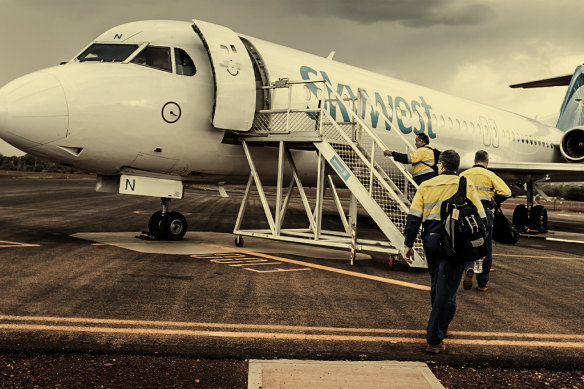
Rio Tinto Group workers from the West Angelas iron ore mine at an airstrip in the Pilbara, WA. Credit: GETTY, DIGITALLY TINTED
“The PRRT is infamous for being a tax that hardly anyone’s ever paid,” says Tony Wood. “Basically, what happens is it’s based upon profit. So if you don’t make any profit, you don’t have to pay. That sounds OK, but you’re allowed to carry forward all of your upfront costs and losses.” A government audit found that as of October 2008, only 10 out of 24 projects were making a profit and therefore paying the PRRT. Says Kevin Morrison, an energy analyst with the Institute for Energy Economics and Financial Analysis: “Somehow, none of these operations are ever making money because there’s so much that they can write off.”
Following a major review of the tax in 2017 chaired by the independent expert Mike Callaghan, amendments were made to reduce permissible deductions and amend anti-avoidance rules. Still, some projects may never pay PRRT, the Australian Tax Office conceded in 2021.
The ATO also has its work cut out chasing down resources revenue that’s shifted overseas using clever accounting methods. For example, using what’s dubbed “thin capitalisation”, a local branch of a multinational “borrows” money at a high rate from another branch of the same firm overseas, and the payments help to reduce its tax burden. Then there’s “transfer pricing”, where you extract a product in a country with a high rate of tax but spirit it to a different country with a lower rate of tax, such as Singapore, and pay your tax bill there instead.
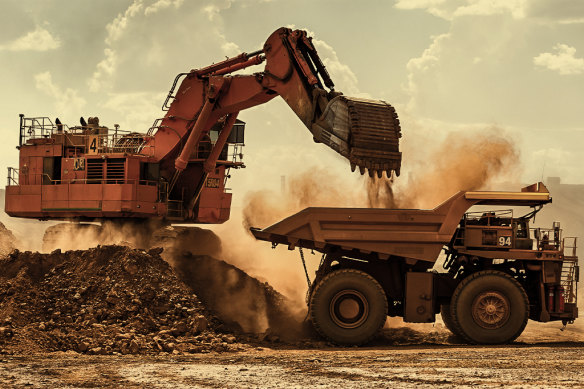
A haul truck is loaded by a digger with material from the pit at Rio Tinto Group’s West Angelas iron ore mine in the Pilbara.Credit: GETTY, DIGITALLY TINTED
Could we get miners to pay more?
It’s been tried. In 2010, Kevin Rudd’s Labor government tried to introduce an extra tax on miners like the PRRT. Called the Resource Super Profit Tax, it emerged from Ken Henry’s tax review of 2008-9 and would have levied an additional 40 per cent tax on profits deemed to be those above an acceptable rate of return (while also reducing the rate of company tax, but that was left a little vague).
As with the petroleum producers before them, the miners revolted. BHP brought together a crack team of between 25 and 30 executives, marketing experts and pollsters in a “war room” at its global headquarters in Melbourne’s Lonsdale Street, reporting directly to chief executive Marius Kloppers. They set to work figuring out what kind of anti-tax campaign would best resonate with the Australian public, according to those with inside knowledge of the campaign.
Mining giant Rio Tinto, the Swiss multinational Xstrata, and the lobbyist group the Minerals Council had also hurriedly gathered talent together in similar whiteboard-equipped offices across the country. That included corporate strategist John Connolly, market-research specialist Tony Mitchelmore and the advertising guru Neil Lawrence, who had, ironically, helped get Rudd elected back in 2007, coming up with the catchy campaign slogan “Kevin 07”.
Support for Rudd’s leadership wavered, and in June 2010, when Julia Gillard defeated him in a leadership challenge, she immediately worked to make peace with the miners.
The group launched a blitz of television spots and full-page newspaper advertisements that focused on what mining did for “average” Australians: “Rudd’s mining tax hurts us all” was one well-used slogan, alongside “Weaken mining, and you weaken Australia”.
The government attempted to counter the attack in what became known as the “ad wars”. But its campaign was judged as preachy compared to the miners’ grassroots approach, which polling showed was cutting through. Support for Rudd’s leadership wavered, and in June 2010, when Julia Gillard defeated him in a leadership challenge, she immediately worked to make peace with the miners.
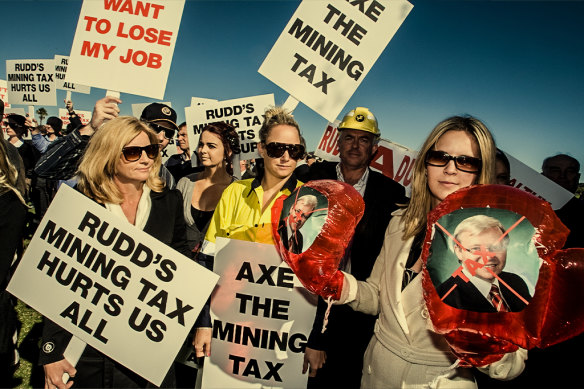
The “Axe the Tax” rally in Perth in June 2010. Credit: FAIRFAX MEDIA, DIGITALLY TINTED
Not only had the miners killed off Rudd’s original proposed tax, but the compromise measure they agreed to with Gillard – now called the Mineral Resources Rent Tax – was substantially watered down. The total cost of the campaign, according to insiders, was between $22 and $26 million, barely a quarter of what they say they had been prepared to spend, and billions less than Rudd’s tax could have cost them. “I guess [Gillard] was desperate,” says Morrison. “She just thought, well, I just have to get this monkey off my back and fix it.” In any event, Gillard’s replacement tax was repealed by the Abbott Coalition government in 2014.
Today, the Greens want to revive the original Rudd proposal, with some amendments, and to strengthen the PRRT. “Resource corporations have got their hooks into the establishment parties,” says Greens treasury spokesperson Nick McKim. “Both the Labor and Liberal parties are running scared of facing another campaign by the resources sector, similar to what Kevin Rudd faced when he tried to introduce higher tax rates for resource companies.”
‘When you think about the biggest sovereign wealth fund in the world, the Norwegian one, guess where the money came from?’
At this point in the conversation, Norway’s sovereign wealth fund usually comes up. Thanks to offshore oil and gas exploration, Norway’s Government Pension Fund Global is now worth in the region of $2.5 trillion – nearly $500,000 for every Norwegian citizen – and contributes over 20 per cent of that country’s annual budget while continuing to grow ever larger. “One thing you could do with the resource rent tax is put it into a sovereign wealth fund,” says Tony Wood. “When you think about the biggest sovereign wealth fund in the world, the Norwegian one, guess where the money came from?”
Tax is not the whole story, however. Norway does tax petroleum operators more highly than we do resource companies here. But Norway’s government has also invested directly in petroleum exploration, and its prudent management of the Global Pension Fund – spending less in good times and a little more in bad – has helped the savings compound into the enormous sum under management today.
In Australia, we actually do have a sovereign wealth fund, the Future Fund, but it’s not funded by resources; rather a one-time deposit from government surpluses and the sale of Telstra. That’s not to say a resource-based fund hasn’t been proposed: in 2012, for example, economist David Gruen noted the idea had “attracted a number of supporters as the boom has proceeded”, and that proponents wanted to “ensure a larger share of unusually high incomes is saved for longer-term benefit rather than being used for current consumption”. But first, argues Diane Kraal, to follow in the footsteps of Norway, Qatar and the other resource-rich nations who have built nest eggs, “We have to actually get our hands on our fair share of that wealth.”
Get fascinating insights and explanations on the world’s most perplexing topics. Sign up for our weekly Explainer newsletter.
Let us explain
If you'd like some expert background on an issue or a news event, drop us a line at explainers@smh.com.au or explainers@theage.com.au. Read more explainers here.